When Buick and Ed Lister created a work of art
Art is for everyone, but that does not mean it’s always universally appealing. Perhaps the work of Ed Lister comes the closest with his eye-catching paintings and murals, but he’s also responsible for a series of daring “impossible objects” during his tenure at London’s Chelsea School of Art.
As the Architectural Foundation of Santa Barbara put it, Lister’s “striking, hand-pulled prints play with our contemporary sensibilities.” Isn’t that statement also relevant to the final-generation Buick Skylark—the creative muse for one of Lister’s most popularized murals?
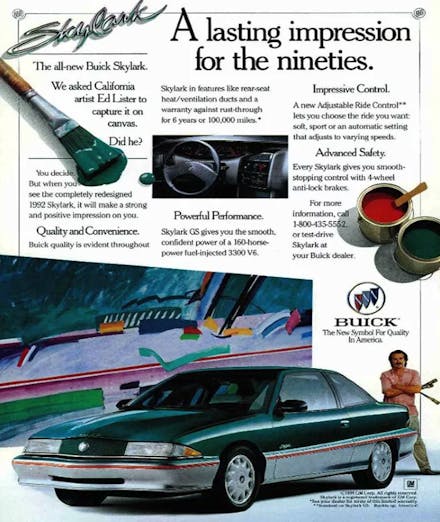
Lister’s tribute to the green, silver, and red pinstriped 1992 Buick Skylark GS littered the pages of every magazine of the day. He deconstructed the little Buick into its color palette and sought inspiration from its aggressive beak, which transitioned into upswept rear fender skirts.
The advertisement asks the reader to determine if Lister earned his commission. I submit that he totally nailed it. But that’s more of a compliment to the Skylark’s designers. As Surrealist genius Salvador Dalí once noted:
“A true artist is not one who is inspired, but one who inspires others.”
Both Buick and Ed Lister did a fantastic job trying to convince the mainstream that the new Skylark was the right compact car for their household. Truly this is an impossible object on par with Lister’s finest work from his time in academia.
But Lister’s abstract expressionism and the Buick Skylark’s radical design weren’t meant to be. They were selling tuna tartare in a meat and potatoes world. One can only hope that the Skylark’s product planners weren’t punished for their gamble, as Lister could pivot and produce brand-appropriate barnyard mural of the 1991 Buick Roadmaster (in photorealistic style).
The Roadmaster catered to a specific market, sharing little with the forward-minded demographic who’d buy a Buick Park Avenue, much less a Skylark. Perhaps the smaller a Buick got in the 1990s, the more it had to prove.
Motorweek knew the stakes were high, using phrases like “emotional shock,” “sharply divided,” and “very unique” to describe what the normally conservative brand had the nerve to put into production. The uprated 3.3-liter V-6 in the Skylark Grand Sport was still pretty slow thanks to a three-speed automatic, but the ride and handling was likely up to snuff for the radical-yet-thoughtful styling.
As if throwing a bone to the General’s public relations staff, Motorweek put a positive spin on GM’s new N-body with compliments to the sporty Grand Am and the “less controversial” Oldsmobile Achieva. Good for GM, but a rough start for the radical little Buick.
Which is a shame; the Buick coulda been the pick of the litter. Maybe not compared to the excellent, fifth-generation Honda Civic and its sweetheart VTEC engine, but the parts that Buick got right were light years ahead of milquetoast A-body Buick Centuries. (The Centuries were still in production and were a tidier fit for Buick’s core demographic.) Since that pool was shrinking with every passing year, the Skylark was a car for the audience Buick wanted, rather than the one it already had. Did the design go too far?
The sheer volume of radically styled, wholly unique parts (steering wheel, vents, etc.) inside the Skylark cannot be understated. You can’t tell from the angle of these photos, but the blackout center stack is worthy of the Tesla Model S—ditto the recessed instrument binnacle. Buick was trying hard with their N-body derivative, but the market was having none of that. More to the point, the 1992–98 Skylark’s sales were roughly half that of the previous (1985–91) generation. (It should be noted that there’s no readily-available sales data for the final year of production.)
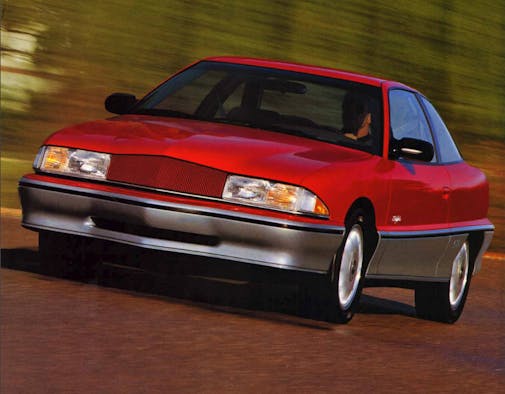
That’s a sobering statistic to consider, and it’s a safe bet the Skylark’s styling “pointed” to the main problem. Two years into production, the sharp-nosed albatross to Buick’s luxuriously conservative perception resulted in removal of all badging from the front fascia. The shame Buick felt is tangible, and perhaps the Skylark’s prospects were brighter had the beak been present at the rear, like the boattail Riviera.

The tri-shield badge made its comeback when the 1996 Skylark ditched its radical schnoz for something forgettable, something truly misguided when paired with those boxy flanks. The flanks no longer had a starting point in the front bumper, and lost their reason for existence. This is tantamount to placing Ed Lister’s mural in a Thomasville furniture showroom, with the same disastrous results: 1996 saw a 21 percent drop in sales over 1995.
Mercifully sales scaled up to 57,724 units in 1997: a decent showing until you consider the Honda Civic sold 321,144 units in the same year. Two premium priced compact cars, but one was the clear winner. The Skylark never had a chance, as Buick had a century’s worth of baggage (as it were).
Perhaps the Buick brand finally realized it was foolishly trying to be all things to all people. That notion made sense when OPEC was forcing downsizing, but this later era was famous for low gas prices and the proliferation of the SUV.
As the Skylark’s passing marked their transition to a more focused purveyor of luxury sedans with higher asking prices, it’s still a shame that Buick couldn’t have gone all in with the Skylark. The N-body itself had potential: consider the later addition of an independent rear suspension, the 3.3-liter’s kinship to the wonderful 3.8-liter V6, and the list goes on as you dig into GM’s portfolio of front-wheel-drive platforms. The high-end hardware could have ensured the 1992 Buick Skylark was more of a rolling tribute to Dada, becoming an import fighter that rejected the values and norms of its corporate mothership.
But no, as the powers that be ensured the Dadaist Skylark was kneecapped from the start, reduced to nothing more than an automotive expression made for the stereotypical Dad. Buick coulda built a contenda in 1992, but that big beak bolted up to a dodo bird. At least Ed Lister got something out of it.
***
Check out the Hagerty Media homepage so you don’t miss a single story, or better yet, bookmark it. To get our best stories delivered right to your inbox, subscribe to our newsletters.
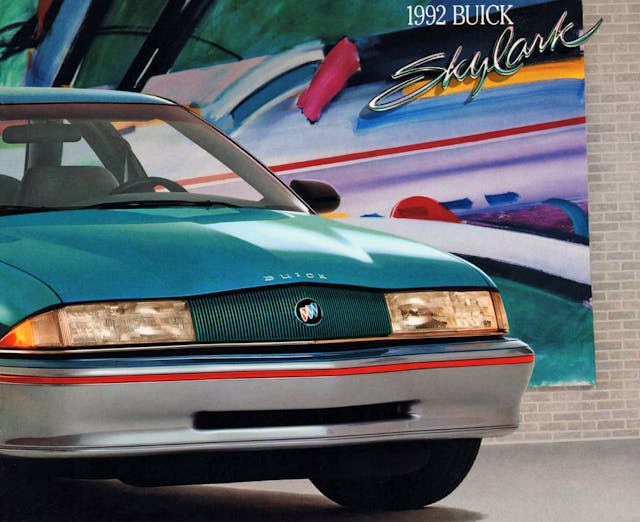
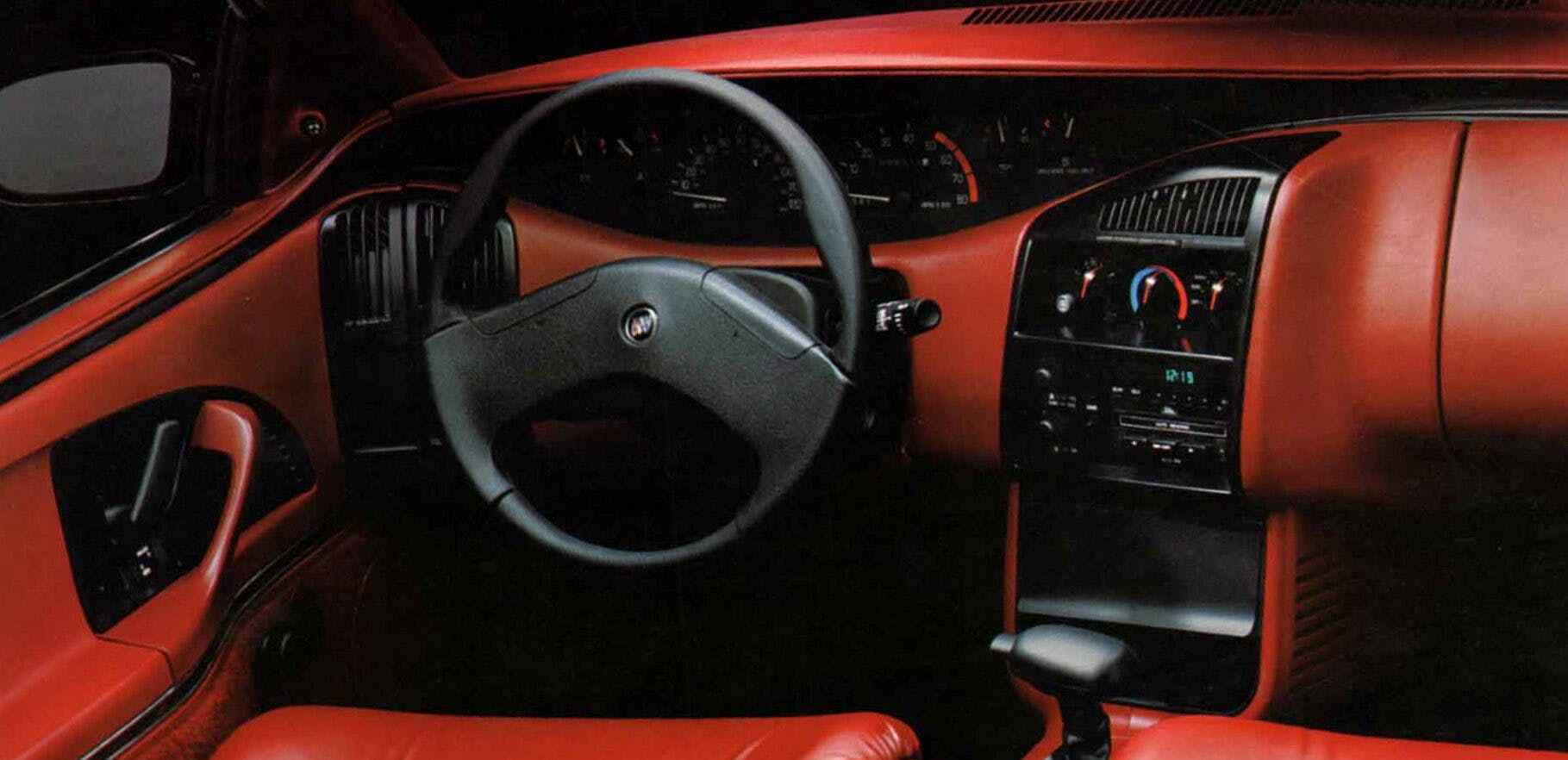
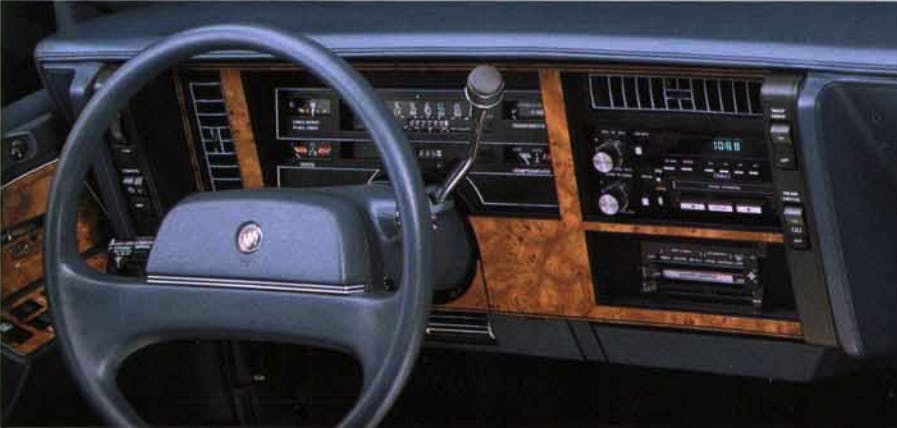
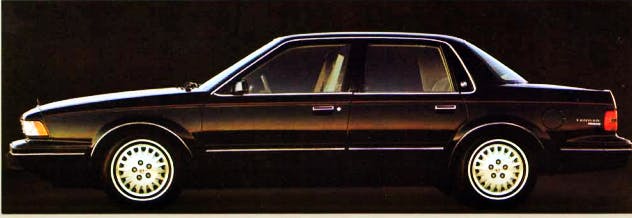
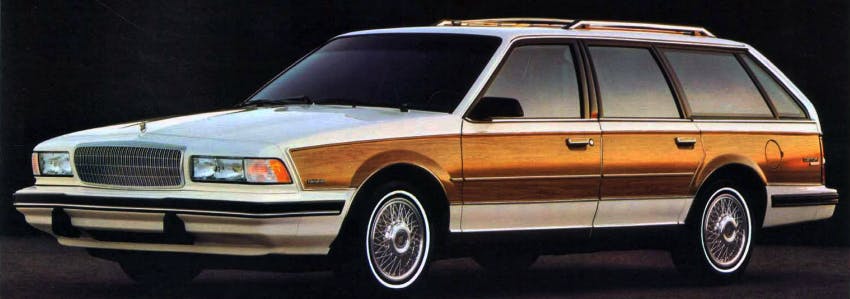
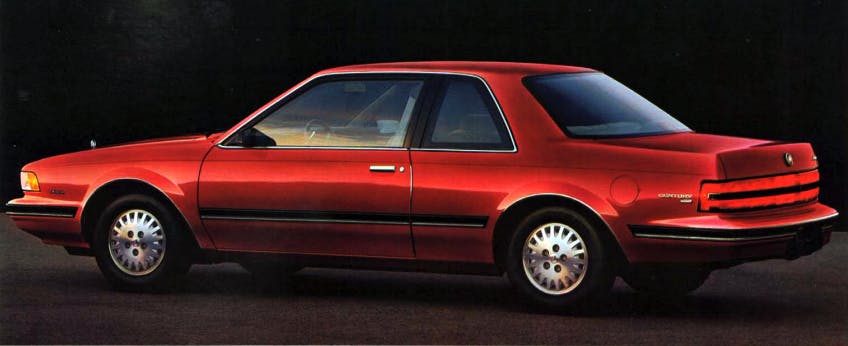


This was not a good time for Buick or GM. The later Le Sabre was about the only thing good in this era.
It was a car that crossed over for new and old but the rest was just a mess of cooperate platforms with a little different take on styling. Pontiac made a connection on the Grand AM but Buick and Old both were strike outs in the N body class. In fact Olds really lost their way at this time and it led to them dying first vs the plan to kill Pontiac first. The Grand Am sales saved them.
I have always been a GM guy and the 80’s were not good as they tried to bring change but it was not the change people wanted FWD and cookie cutter cars were soul less. Yes they were not the only ones but GM could and should have done better. The internal culture just was so toxic that it led to their failure in 2008.
As always, thanks for your enlightened comment. Yes, it seems like the N body only lived to serve the Grand Am. It was the only product that made it work, and it goes to show how much better GM coulda been had they concentrated their efforts on less models per brand.
Of course hindsight is 20/20, making that idea work is miserably challenging (impossible, actually) but it woulda been great if the Grand Am was sold in Buick dealerships instead of the Skylark. It would make more sense next to the conservative, stereotypically Buick, A-body Century. (Which I assume was still in production because of some UAW contract in Oklahoma City.)
Of course, if my alternate reality happened, I would have never been a teenager enamored with the courage it took to make the 1992 Skylark. It clearly made a positive impact on my life, and I truly thank Buick for greenlighting this design.
The truth is in the 80’s it was a time of reduction. Cost were climbing and the old way like the Sloan plan just never were going to continue.
We all love out brands but GM has not only too many models but too many brands. If one was to look around today it is clear that one mass market brand and one Luxury brand is about all most MFGs need anymore. Honda/Acura. Toyota/ Lexus etc.
Even now the Luxury brands are good if you get it right for add on profits but if you get it wrong like Ford has with Lincoln now it can be a drain of money selling only 83,486 combined of all models. Here again the cooperate platforms are killing a brand.
I am a diehard GM fan but I am also realistic and realize that GM had way too many division and tried to create too many car from the same platforms. They could dress them up a number of ways but in the end it cut into profits and just did not make the money back it needed to fund the future and to stem the losses do to bad management.
OId, Buick. Saturn and Pontiac all needed to be shut down years ago. GM needed to focus all their efforts and funding to make Chevy the best they could. Image if all that money had been used to make one good car vs 5 ehh cars.
Styling yes it is cool and all that but it can not save other issues like blown head gaskets etc. Now GM is not the only one without sin here. Chrysler and Ford both held on to a number of brands when it became apparent they were not economically feedable.
Gm did try much with Styling but what may have impacted you still failed at the dealer. These were not even common cars back new.
I too have loved some cars for what ever reason and they were not always popular either but history only judges on success and not how brave someone was.
It was Brave for Delorean to make a Tempest with a rear transaxle and independent suspension. But it was a failure. High cost and more power were not to let it be. These examples are all around.
I just wonder where GM might have been if they had focused their efforts in making Chevy what it could have been vs just another version of the same cars it repeated 5 times. If those efforts went into one car and one division.
The risk I see of concentrating on Chevy is that many life-long Buick, Olds, or Pontiac buyers at that time simply would not have considered a Chevy. My dad, a Buick man since 1952 (who bought his last one in 2002), considered Chevrolets to be rather cheap and second-rate. He was not happy at my buying a nice 1973 Nova in 1978, but he did not say much; presumably, he thought that I would learn better – and could afford better – as time passed.
Not a strong time for Buick with the Skylark. 3-Speed automatic? The 3800 Supercharged V6 though was a great motor. The Regal GS with it was a great car.
That interior shot is really interesting. Blur out the badges and I’m not sure most people that frequent here would think it was Buick or even GM whereas that Century dashboard is clearly an escapee from 80s Detroit…
Grand Ams were good. The later Olds Intrigues and Aurora I think are under-respected as well. GM at the time let you down in some details, but those 3 cars in concept and most styling execution are strong for the era.
I also like 1999 Accord Coupes but that’s because they read as Pontiac design (especially the rear) to me.
Certainly, Mr. Lister’s work is great art.
Less certain is the car’s status as “a work of art”. It’s really quite bland.
To see a REAL Buick work of art, look at the first-year, 1953 Skylark.
A one-year-only style, it could only be had as a convertible.
It always reminded me of a British sports-car on steroids.
https://www.mecum.com/lots/CA0819-388419/1953-buick-skylark-convertible/
While I think it should have happened in the late 70s, I would still try this today if I were in charge of GM (which I never will be):
Every dealership sells GM in every territory (i.e., where I live the brands were artificially split such as GMC/Chev).
There is no duplication or stealing sales from self and clarity of product niche is evident. If this means everything is a Chevrolet or a Cadillac so be it.
But I think treating the other brands (mostly defunct now or questionably alive aside from “China buys Buicks”) as models and the significant history as the trim levels is a way to capitalize on brand equity.
Pretending you compete in all segments (i.e., actually make cars and not just SUV)
Chev is your car in all size segments (Sprint/Citation/Malibu/Chevelle/Impala) that comes in 4 door sedan, wagon, hatchback, 2 door coupe as the market will bear.
Your halo pony car is a Camaro for half a generation and a Pontiac Firebird for the second half of the generation.
Your personal Luxury Coupe could alternate with the above to be a Monte Carlo and Grand Prix.
One large-in-charge (but not Escalade sized) SUV is your Buick Electra.
The 1/2 ton truck is Chev. 3/4 ton up are GMC.
Any smaller trucks/utes are Chev.
All SUV/crossover under the Buick are Chevs, aside from possibly a GMC Jimmy.
Corvette is a 2 seater sports car, full stop. Offering both mid and front engine layout would be my goal (they don’t need to look the same but rather be evolutions of C7 and C8 distinctly).
Cadillac is Escalade and ultra Lux. Limited models not worried about all sizes, just what the premium buyers want.
I’d love to fit Olds into this too, but Cutlass and Vista Cruiser as trim levels is probably where you go. Saturn I don’t see the value but possibly the smallest city cars could tap that for value.
Good plan, and they coulda done that during bankruptcy, when dealer franchise laws would be at their most vulnerable.
Only issue I see is that luxury cars can’t be sold seriously in big cities when parked next to cheaper cars. Cadillac already has a hard enough time with Lexus, they would need to be standalone to provide the customer service that buyer expects.
I recall seeing the new Skylarks when they came out and I recall that at no time did I ever see them on the road in South Florida with any frequency. I personally thought the design was hideous, and remember reading a magazine review (can’t remember the exact publication) that compared the styling to “fish buoyancy”. The only correlation I could draw from that is that the styling is something that ‘just is’. I guess maybe people would either love it or hate it (count me in with the latter), and most are probably now relegated to scrap yards if they’re still in existence. Someone will probably stumble across one someday, and decide to build some crazy pro street machine out of it (Rick Dobbertin are you listening?). If money were no object I’d do just that, and pair it with a similarly-constructed AMC Marlin just so I could open the garage door to two of the most quirky designs to come off an assembly line.
Retro Mod Marlin. I like it.
Another reminder of how awful the 80s were in general.
I guess I am the oddball here because I liked the Skylark. I thought it looked Citroen-ish. I worked at a Buick-Pontiac-GMC dealership at the time. The Grand Am certainly outsold the Skylark but I think that is because Buick was, and probably still is fighting the image of an old person’s car. The typical Buick buyer was not interested in such a small car and the typical small car buyer was not usually interested in a Buick. Too bad for them, Buick has made a number of very nice but underappreciated cars.
I thought these were oddly-styled when new. Over the years, my view has softened a bit, and I can appreciate that they were…distinctive. I still would not buy one, though.
Anybody with a sense of value back then knew that GM built crap compared to Toyota or Honda. No matter how much “design” tinsel and misguided advertising falderal were heaped upon these heaps, the word was out. At the time, I considered these rental fleet stock at best.
I would be interested to compare sales figures between the Skylark/Regal Gs and the Thunderbird Sc and LX models . Similar cars as far as size and features other than Fords supercharged 4 and 6. I have a 97 Bird LX, with the 3.8 V6, it is still going strong at now 26 years old. I am collecting parts for it now to live on as supply becomes less available.
I have a 96 four door skylark custom and I must be one of the oddballs. I really enjoy driving it. I would love to have one of the early coupes as in the article.
Oddly enough my Skylark is also the same green color as the one pictured.
These were such a hideous car.
That body style is one of the most ugly styling exercises of all time; right up there with the Pontiac Aztec. In my humble opinion, The GS badging was a true bastardization of what was once one of the top muscle car trim levels. Just an opinion………
Two words….butt ugly!!!!!!